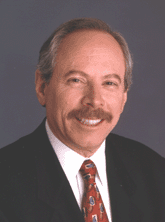|

|
This blending of clinical research and practice will enable the field of drug abuse to realize the full potential of
science-based treatments.
|
|
In recent years, NIDA research has produced an array of pharmacological and behavioral interventions that show great promise for improving drug abuse treatment. We know that many of these treatments reduce drug abuse among patients in research settings. We also know that promising new treatments can fail to make the transition from research to practice. By the same token, clinical experiences and observations that could lead to treatment advances do not always get the research attention that they deserve. In this respect, the field of drug abuse is not unique. All fields of medicine have struggled to bridge this disconnect between scientific discovery and assessment and clinical practice.
Now, however, a dramatic change is under way that will bring drug abuse researchers into the real world of the treatment clinic and enable practitioners to participate in treatment research. The instrument of this change is NIDA's National Drug Abuse Treatment Clinical Trials Network (CTN). The CTN is a cooperative undertaking of NIDA, university drug abuse scientists, and community treatment providers in which researchers and practitioners work together to test research-based treatments in community settings.
In a little more than a year, the CTN has gone from concept to clinical trials, thanks to the efforts of NIDA staff and the researchers and community treatment program (CTP) providers and practitioners from the network's first six regional nodes. Working together to address the many practical obstacles to integrating research and practice, this consortium has established the CTN's organizational structure and operational procedures, selected the first set of
promising treatment concepts and developed clinical protocols to test them, trained participating community providers in general and protocol-specific research procedures, and begun implementing the protocols in a variety of community treatment settings. (See "NIDA Clinical Trials Network Begins First Multisite Tests of New Science-Based Drug Abuse Treatments,")
Developing workable protocols for conducting clinical trials in community treatment programs has brought researchers and practitioners together on a regular basis to discuss how to retain the science base of new treatments while modifying them sufficiently to make them practical in the clinic. One of the most important facts this interaction has highlighted is that the road between research and practice is not a one-way street. Valuable ideas and information about how to improve drug abuse treatment travel in both directions. As a result, we expect that when a CTN study demonstrates that a research-based therapy works in the clinic, the protocol for that treatment will be adopted quickly as a standard of care by CTPs. Likewise, we expect that researchers will take the knowledge gained from working with practitioners back to their laboratories to inform the design of new treatment studies that meet the real-world needs of the clinic.
This fall, NIDA sponsored a number of new initiatives to build on the progress the drug abuse field is making toward fostering a working partnership of treatment research and practice. These activities include:
- In September, at the CTN's Southern New England Node at Yale University in New Haven, Connecticut, NIDA announced the release of the NIDA Clinical Toolbox, a new package of published resources on the principles and practical delivery of research-based treatment. The Toolbox, which contains the latest scientific information about drug abuse treatment strategies, has been shipped to nearly 12,000 drug abuse treatment programs around the country. (See "NIDA Sends Clinical Toolbox to 12,000 Drug Abuse Treatment Providers,")
- In October, CTN researchers and practitioners from the network's first six regional nodes met in Los Angeles to welcome their colleagues from new regional nodes. The addition of eight new CTN sites more than doubles the size of the network, extends its reach into additional regions of the country, and expands the scope of its research and communications activities. (See "Eight New Regional Research Sites Added to Clinical Trials Network,")
- In November, the CTN held a regional conference in Los Angeles called "Blending Clinical Practice and Research: Forging Partnerships to Enhance Drug Addiction Treatment Research." At the conference, teams of clinicians and researchers from the CTN presented cutting-edge scientific findings about drug abuse and addiction and real-life perspectives on overcoming obstacles, such as policy and funding constraints, that sometimes inhibit collaboration between researchers and providers. The conference was sponsored by NIDA, the UCLA Drug Abuse Research Center (which serves as the hub for the Pacific Region Node), the Los Angeles County Alcohol and Drug Program Administration, and The Robert Wood Johnson Foundation.
The CTN's first full year of operation provides compelling evidence that drug abuse treatment researchers and practitioners can work extremely well together toward a common goal-improved drug abuse treatment in the Nation's community treatment programs. By establishing a system for researchers and clinicians to work more closely together in pursuit of this goal, the CTN is not just bridging the gap between research and practice, it is closing it. In time, this blending of clinical research and practice will enable the field of drug abuse to realize the full potential of science-based treatments to reduce the tremendous personal and social costs of drug addiction.
 At the "Blending Clinical Practice and Research" meeting in November, participants from the Florida Node discuss drug addiction treatment strategies. Pictured (from left) are: Ms. Valera Jackson, The Village, Miami; Dr. Jose Szapocznik, University of Miami; Dr. Jerry Feulner, The Center for Drug-Free Living, Orlando; Mr. Matthew Gissen, The Village, Miami; Ms. Nancy Hamilton, PAR Village, Pinellas Park; and Mr. Dick Jacobs, The Center for Drug-Free Living, Orlando. |
|